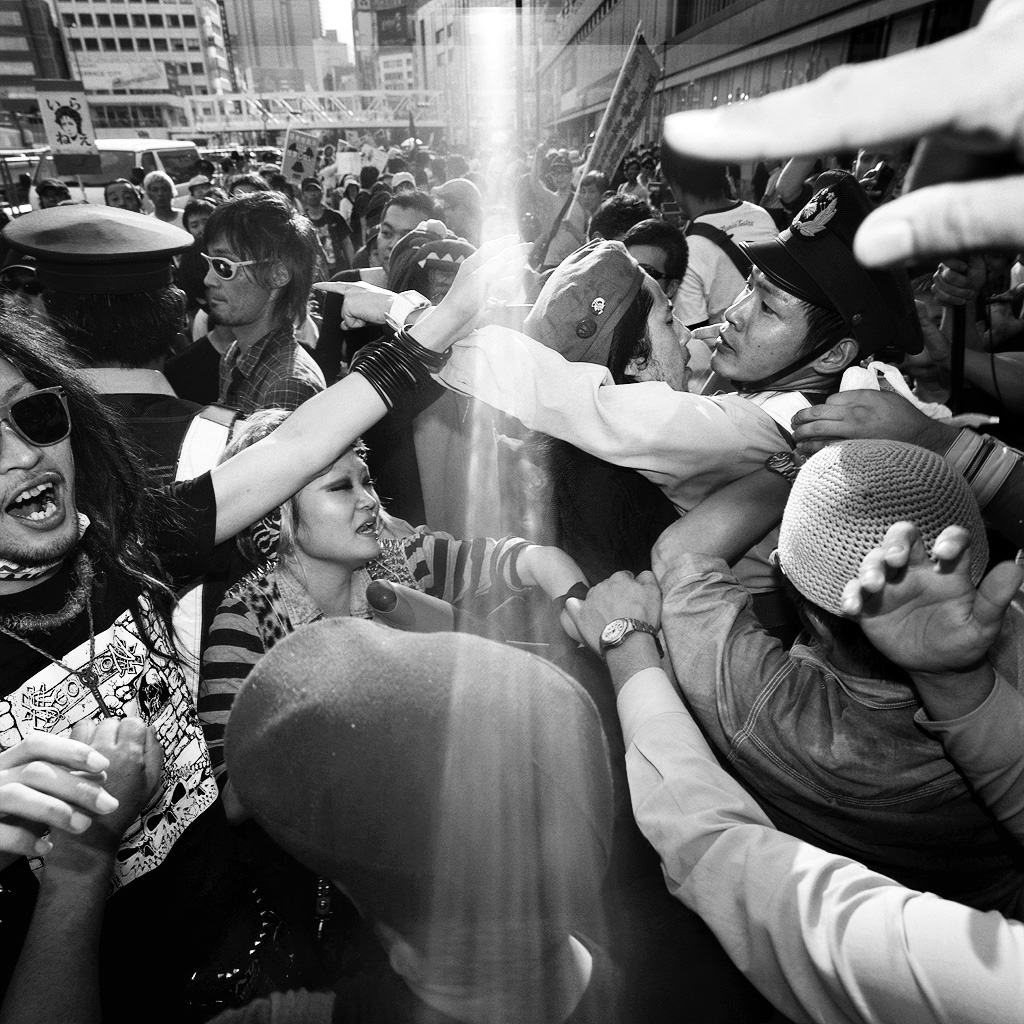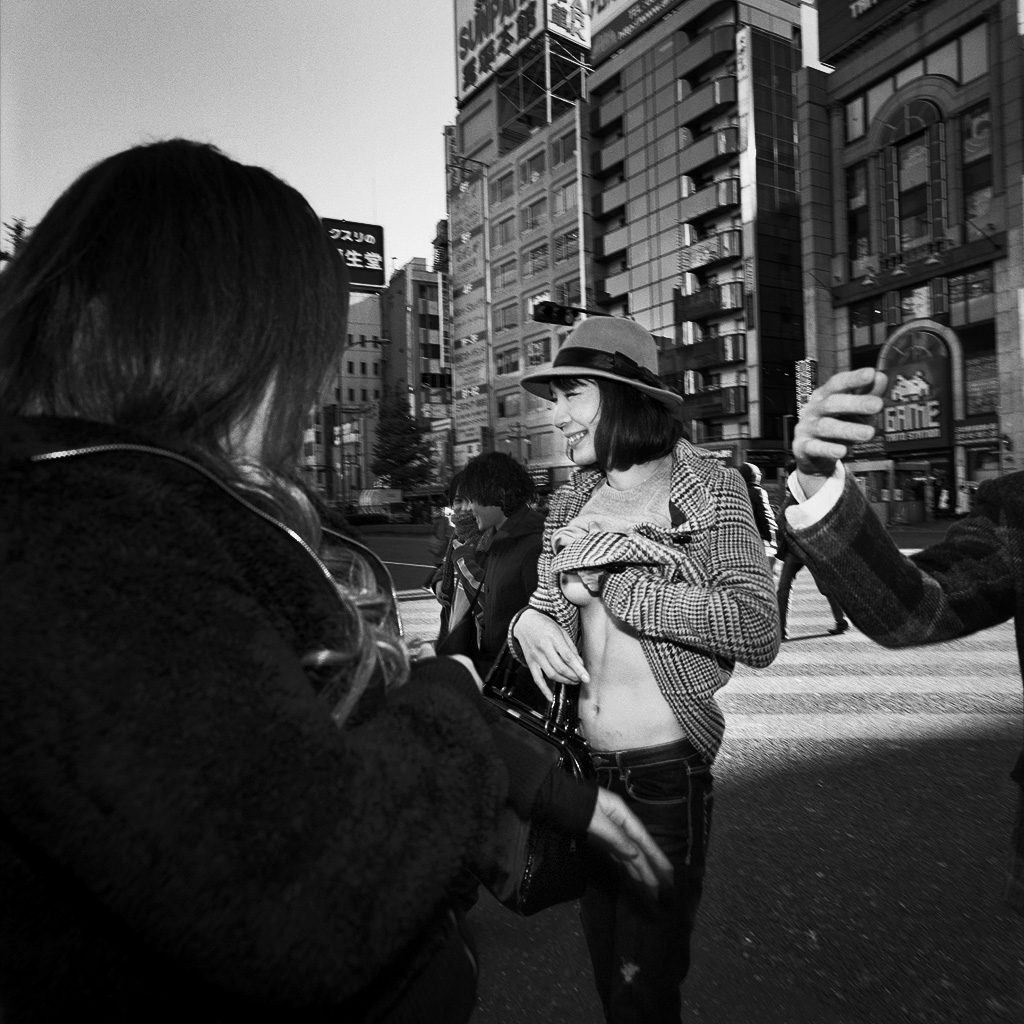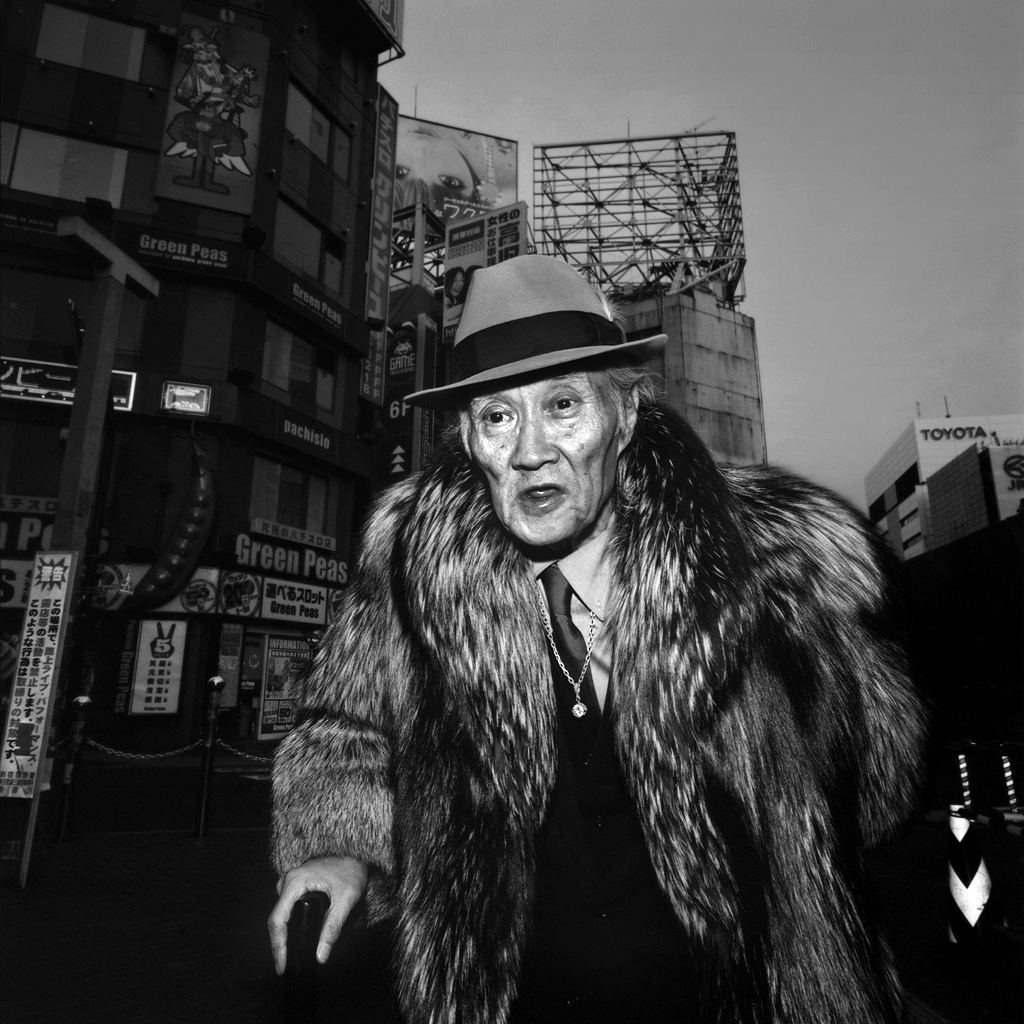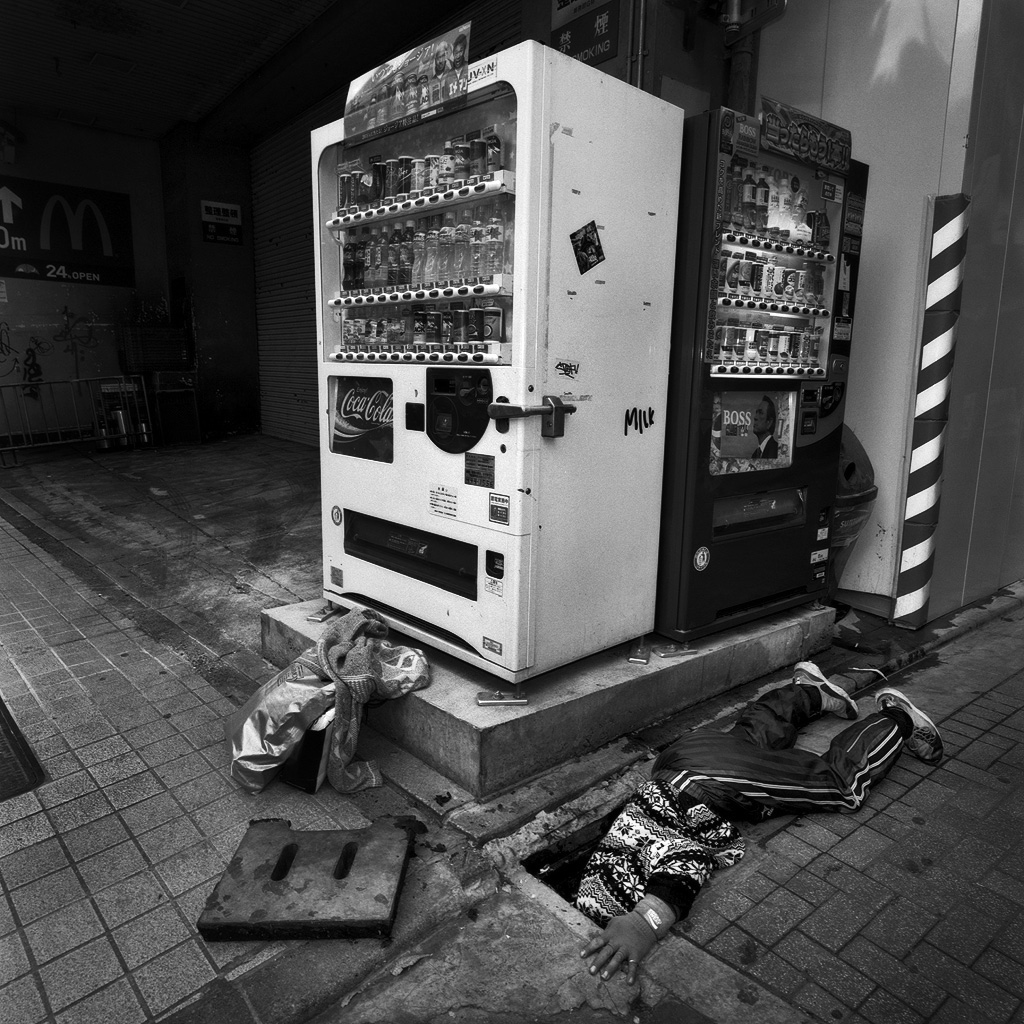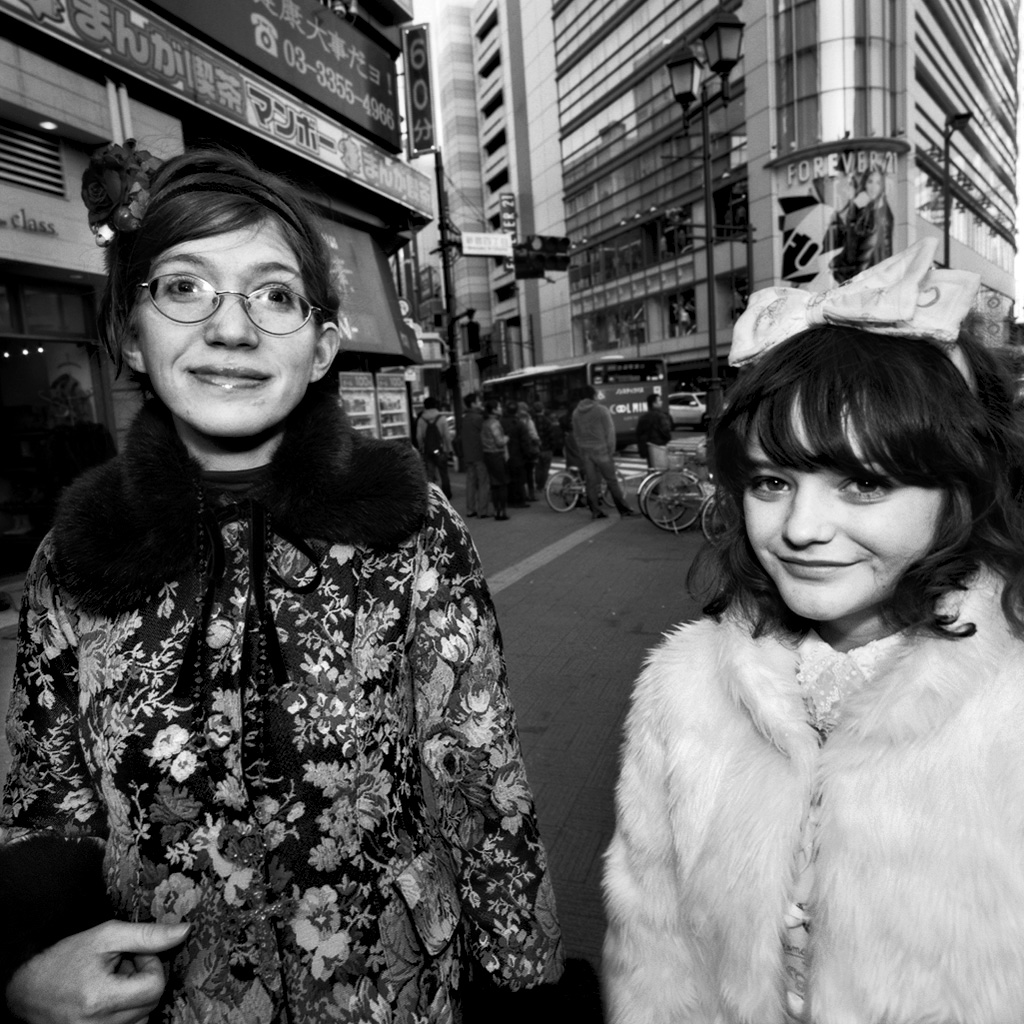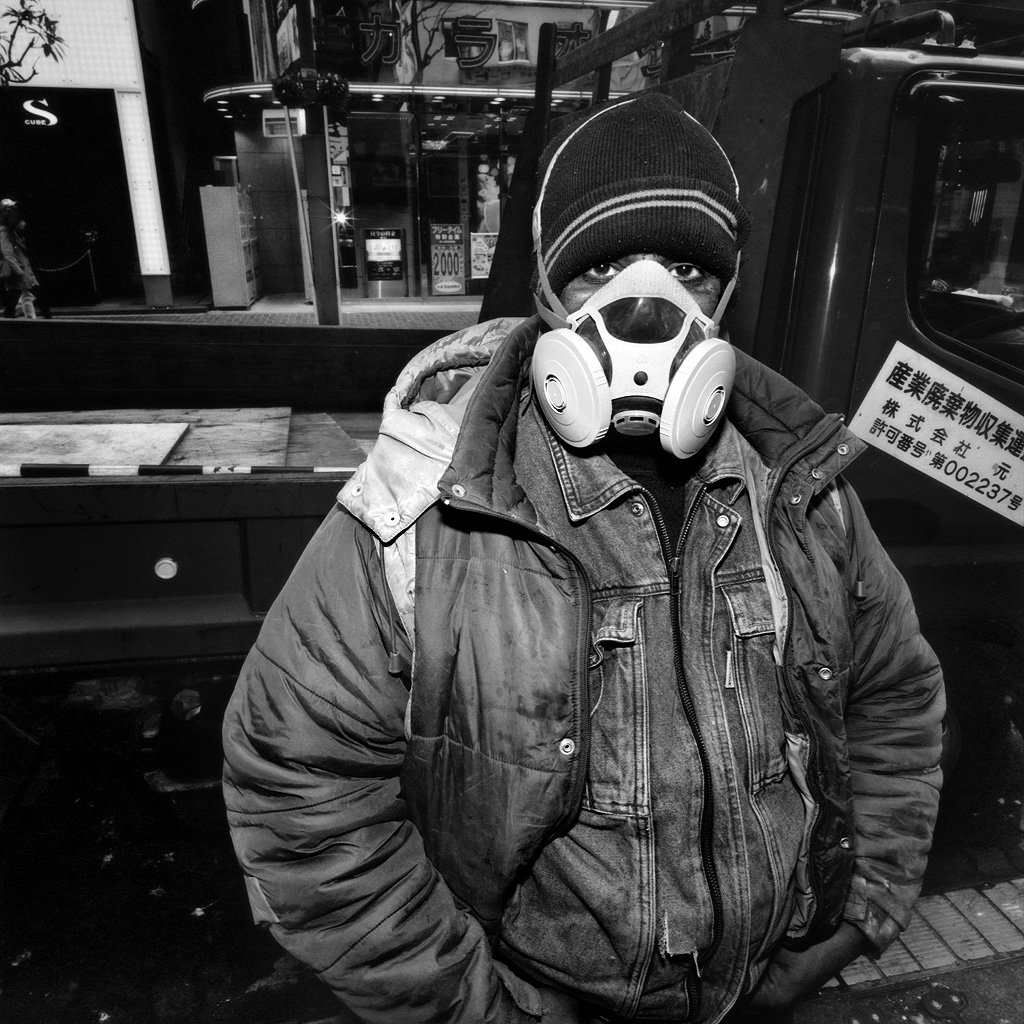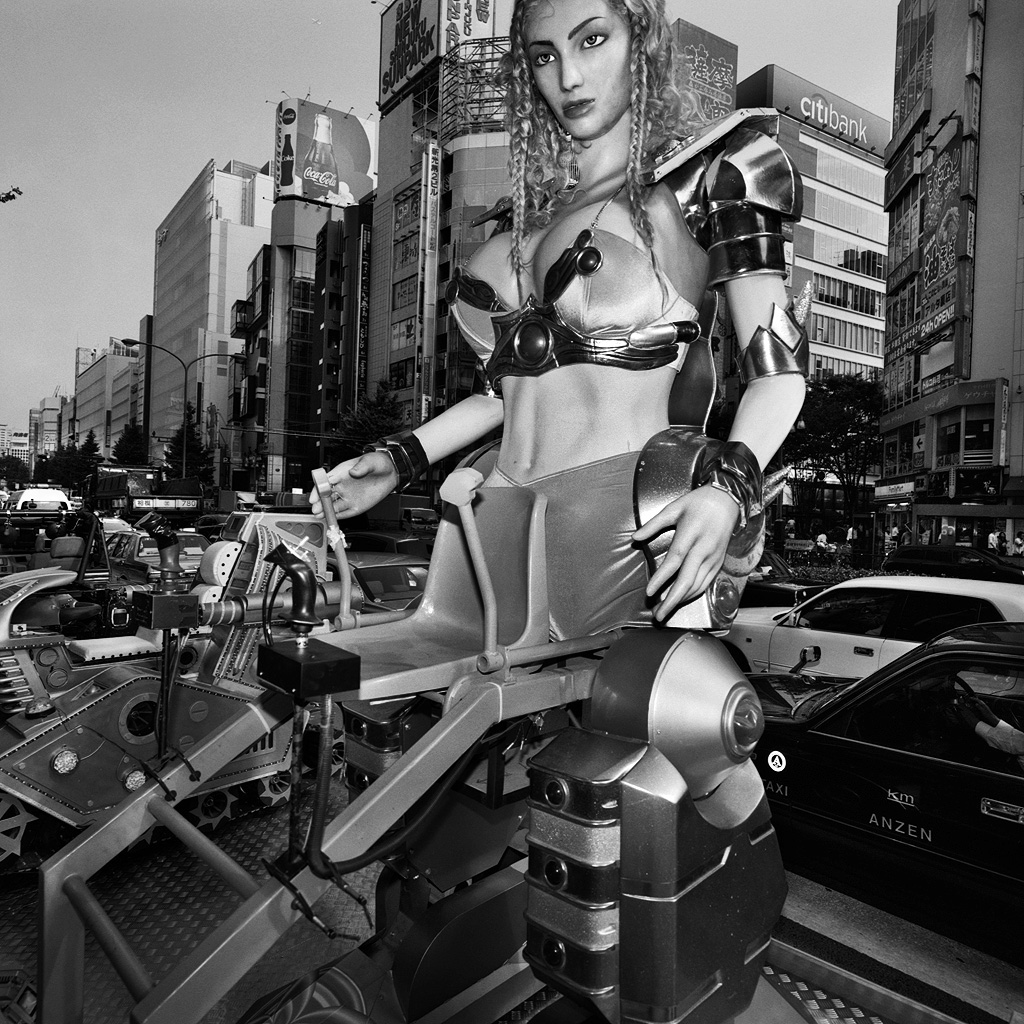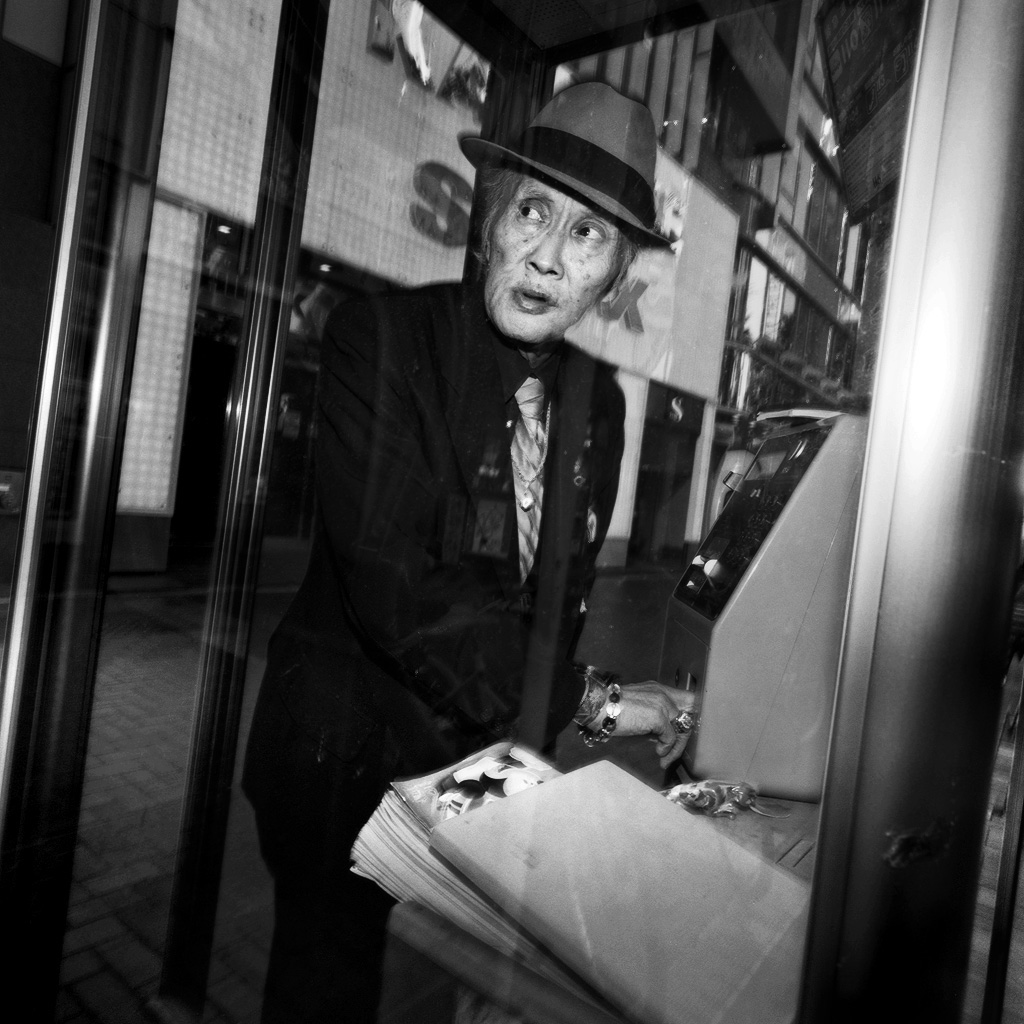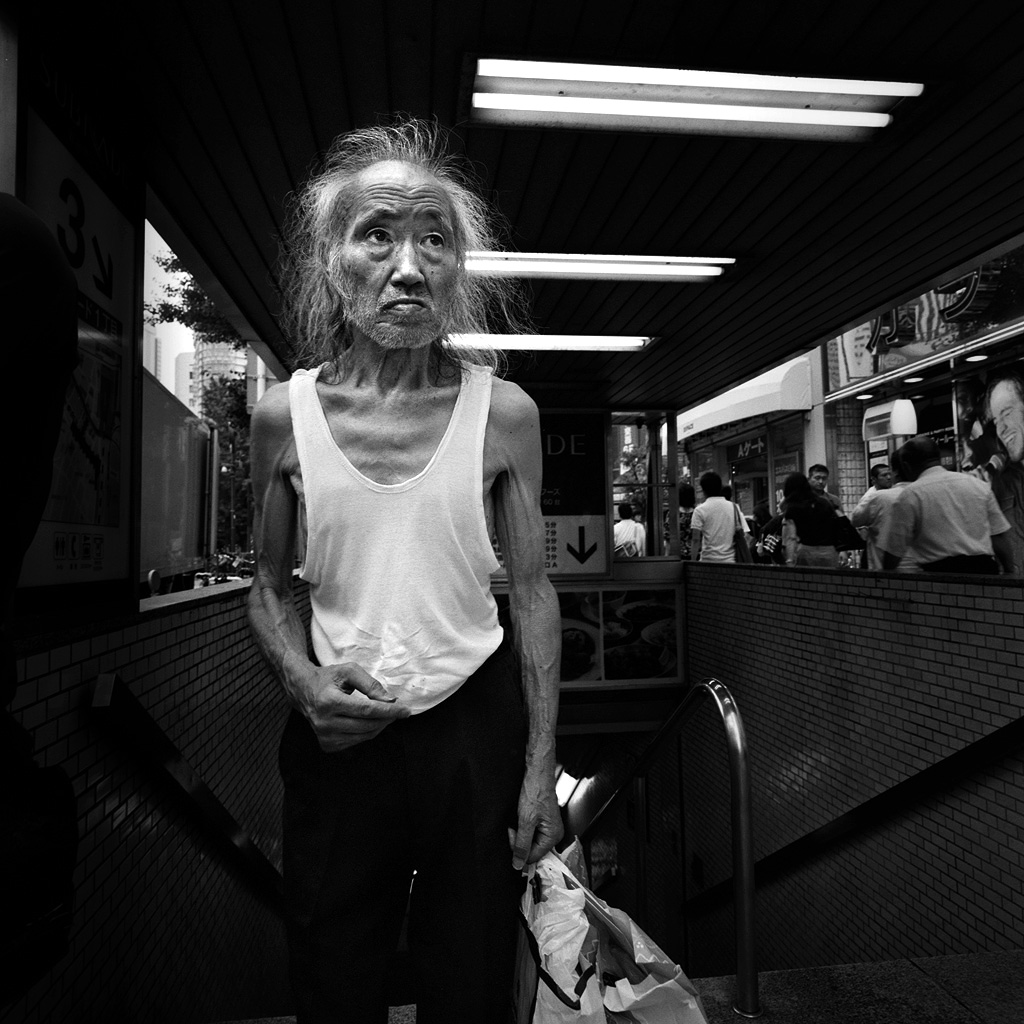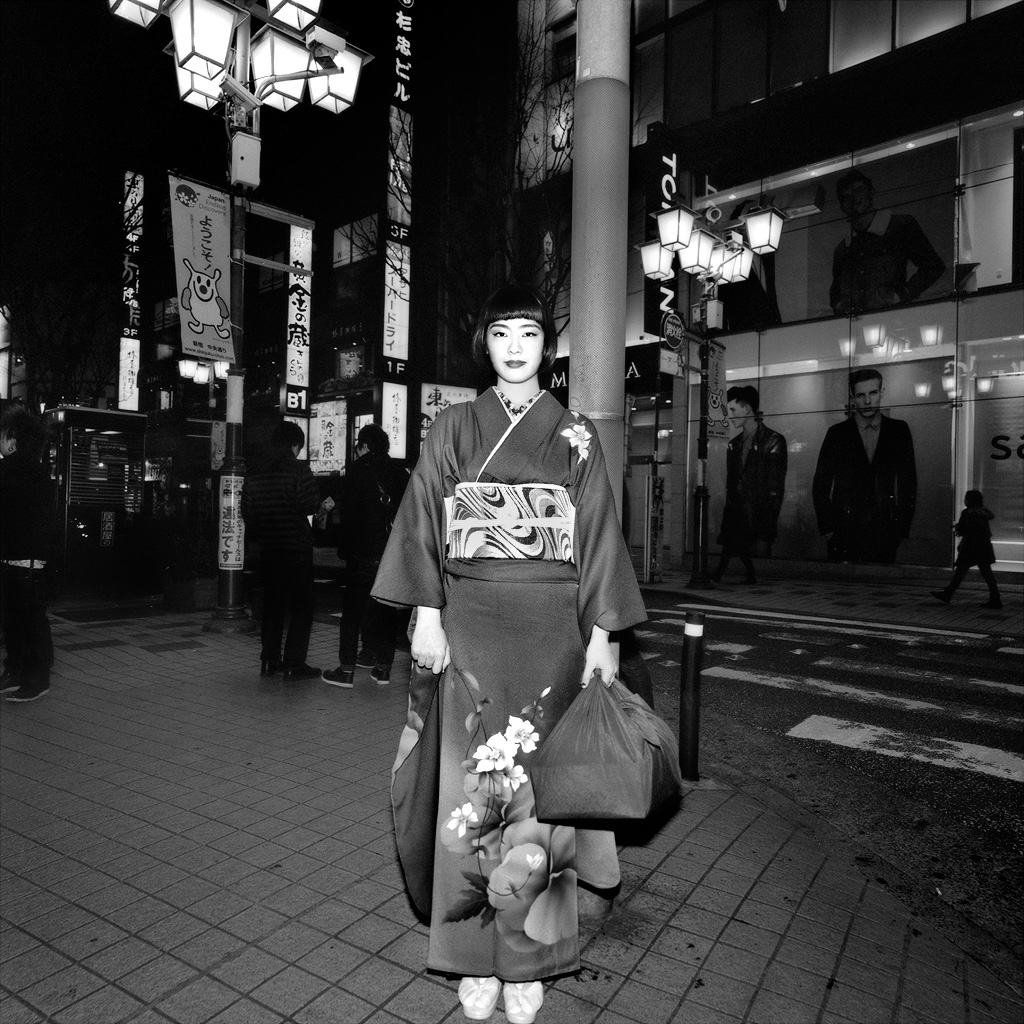Born in 1971, Shinya Arimoto has been photographing and exhibiting work since 1994, and was awarded the 35th Taiyo Award in 1997.
Arimoto is currently teaching photography at the Tokyo School of Visual Arts, and he has supervised and led the artist-run Totem Pole Photo Gallery since founding it in 2008. We speak with Arimoto about his work and experience.
Tell us a bit about yourself, and your photography.
I was born in Osaka and live in Tokyo now. I am shooting almost all my photographs on the streets of Tokyo, several times a year hold exhibitions of my work at Totem Pole Photo Gallery, which I run.
Your photography seems to be centered around portraits made in the square format — what is it that you love about this particular way of seeing and working?
The reason I use the square format is related to the issues you have when dealing with the subject and the background. In a horizontally oriented photograph in a non-square format the distribution of a background is more than the subject.If a photograph is taken in a vertical position, the size of distribution of a person, the amount of the frame they take up, will increase. So there’s more of one thing or the other to deal with. So the square format is convenient for me to compose images since it eliminates that issue.
Who would you name as your artistic influences?
I love 1960’s American street photography. Garry Winogrand, Lee Friedlander, Bruce Davidson, Diane Arbus, and so on.
Your favourite book/movie/musical album?
Manga (Japanese comics) / Pola X (by Leos Carax) / Fingerpainting (by The Red Krayola)
You started making portraits made in Tibet more than a decade ago. Would you say your recent work has diverged from then, or matured?
I first started the series when I was 24 years old. I feel that the impulse of youth is evident in the early images. Compared to the past I am I am working to be more objective.
How often do you photograph in Tibet, and do you see yourself continuing to work on this project in the near future?
I was often visiting and shooting Tibet from 1994 to 1998. And those photographs have been collected into my first photo book “Portrait of Tibet” was published in 1999.
I revisited Tibet in the summer of 2009 for the first time in 10 years. The photograph at that time was published in “ariphoto selection vol.3.”
This project is still ongoing, so I have hope that in the near future to go to Tibet.
If you were given access to any one person for one day, who would you photograph?
I do not have much interest in shooting a celebrity or anything. I am fine with desire being on the streets of Tokyo.
What was your artistically darkest moment? How did you get out of that?
For me a dark time would be being unable to have time to take a photograph. I’m happy because there I’m in a position to have a lot of time to shoot now. Simply, it’s necessary to keep taking more photographs.
How do you see the wider Asian photography scene to be developing, in relation to the established and thriving culture in Japan?
I think that it will continue to grow.
If you travel back in time 20 years and meet the younger version of yourself, what advice would you give him?
Watch out for crooked advertising agencies offering work.
What advice do you have for aspiring photographers?
Simply keep photographing, and sharing those photographs. It doesn’t matter how – exhibitions, in print, websites, anything.
More from Shinya Arimoto: http://arimotoshinya.com
Interview by Callan Tham, with translation by John Sypal.
Share

